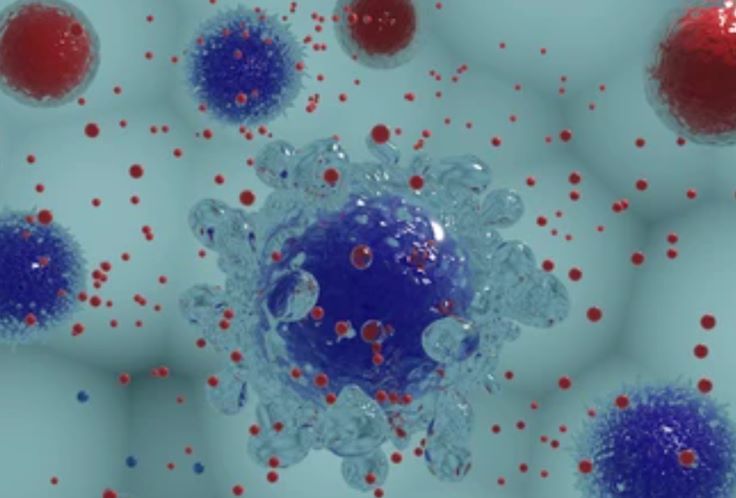Exosome Transfection for Altering Biomolecular Delivery
As nano-sized extracellular vesicles, exosomes are endowed with remarkable natural properties that make them ideal delivery vehicles for diverse cargoes. Exosome transfection has emerged as a transformative approach for delivering biomolecular cargo, including nucleic acids, proteins, and small molecules, to target cells and tissues.

Mechanisms of Exosome Uptake and Intracellular Trafficking
The efficient uptake and intracellular trafficking of exosomes represent crucial determinants of their transfection efficiency. Exosomes can be internalized by target cells through various pathways, including clathrin-mediated endocytosis, micropinocytosis, and direct membrane fusion. Upon internalization, exosomes undergo intricate intracellular trafficking, culminating in the release of their cargo into specific cellular compartments. Understanding these mechanisms is essential for optimizing exosome-based transfection strategies and enhancing the delivery of biomolecular payloads with precision and efficacy.
Exosome Engineering for Enhanced Transfection Efficiency
Exosome engineering for enhanced transfection efficiency involves modifying and optimizing exosomes to improve their ability to deliver biomolecular cargo into recipient cells. This area of research aims to overcome limitations associated with native exosomes by tailoring their properties to facilitate more efficient and targeted biomolecular delivery.
- Genetic modification. Genetic engineering techniques, such as transfection with plasmids or viral vectors, can introduce specific nucleic acid sequences into exosome-producing cells. These sequences may encode proteins or RNA molecules that modify the composition and functionality of exosomes, thereby enhancing their transfection capabilities.
- Lipid modification. Modifying the lipid composition of exosome membranes can improve their stability, cellular uptake, and cargo release properties. Lipid tailoring techniques, such as the insertion of lipids with specific biophysical properties, can enhance the fusion and uptake of exosomes by target cells.
- Surface functionalization. The surface of exosomes can be functionalized with ligands or peptides that facilitate targeted binding to specific cell receptors. This targeted delivery approach enables exosomes to be selectively taken up by desired cell types, improving the efficiency of biomolecular transfer.
- Cargo loading techniques. Developing robust methods for the efficient loading of biomolecular cargo into exosomes is crucial for enhancing transfection efficiency. Optimization of cargo loading techniques, such as electroporation, sonication, or chemical transfection, is essential to ensure high payload capacity and stability within exosomes.
In Vitro and In Vivo Models for Studying Exosome Transfection
In vitro and in vivo models play crucial roles in studying exosome transfection, providing valuable insights into the uptake, intracellular trafficking, and functional outcomes of exosome-mediated biomolecular delivery. These models are instrumental in assessing the efficacy, safety, and therapeutic potential of exosome-transfected cargo in both cellular and physiological contexts.
- Cell culture systems. In vitro cell culture systems, including primary cells, cell lines, and organoids, are extensively used to investigate the internalization and intracellular fate of exosome-transfected cargo. These models enable the study of cellular uptake mechanisms, intracellular trafficking pathways, and the biological responses elicited by exosome-mediated cargo delivery.
- Co-culture systems. Co-culture models, where exosome-secreting cells are co-cultured with recipient cells, provide insights into the intercellular communication and transfer of biomolecular cargo between different cell types. This model allows for the examination of cell-specific uptake patterns and intercellular signaling mediated by exosome-transfected cargo.
- 3D culture systems. Advanced three-dimensional (3D) culture models, such as spheroids and organoid cultures, offer more physiologically relevant platforms for studying the behavior and therapeutic effects of exosome-transfected cargo in multicellular environments. These models better replicate the complexity of the cellular microenvironment, enabling investigations into tissue-specific responses and drug delivery outcomes.
- Animal models. Preclinical studies utilizing animal models, such as mice, rats, and non-human primates, are essential for evaluating the systemic biodistribution, pharmacokinetics, and in vivo behavior of exosome-transfected cargo. These models provide invaluable data on tissue-specific accumulation, clearance rates, and the overall safety and efficacy profiles of exosome-mediated delivery in living organisms.
- Disease models. Disease-specific animal models, including tumor xenografts, disease mouse models, and models of tissue injury, serve as powerful tools for investigating the therapeutic utility of exosome-transfected cargo in pathological conditions. These models enable the assessment of targeted drug delivery, regenerative effects, and therapeutic outcomes in disease-relevant contexts.
Applications of Exosome Transfection in Biomedical Research
The versatile applications of exosome transfection have redefined the landscape of biomolecular delivery in biomedical research.
- Gene therapy. Exosome-mediated delivery of therapeutic nucleic acids, such as siRNA, miRNA, and mRNA, holds promise for precise gene modulation and targeted gene therapy.
- Drug delivery. Engineered exosomes serve as potent vehicles for the targeted delivery of small molecule drugs, exhibiting enhanced bioavailability and reduced off-target effects.
- Regenerative medicine. The transfection of exosomes loaded with regenerative factors and signaling molecules presents opportunities for promoting tissue repair and regenerative medicine applications.
- Cancer therapy. Exosome-based delivery of anticancer agents and immunomodulatory compounds holds potential for precision cancer therapy and immunotherapy.
Creative Bioarray Relevant Recommendations
| Product/Service Types | Description |
| Exosome Standards | Creative Bioarray provides the best quality lyophilized exosome standards obtained from several biological samples, including hundreds of different cell lines, plasma, serum, saliva, and urine as well as other bio-fluids. |
| Exosome Isolation Tools | Creative Bioarray aims to develop the best quality exosome isolation tools with optimized conditions to help our customers obtain pure exosomes with a higher yield. |
| Exosome Applications | Creative Bioarray offers a complete set of services for exosome application including but not limited to exosome transfection, exosome labeling, and exosome targeting. |